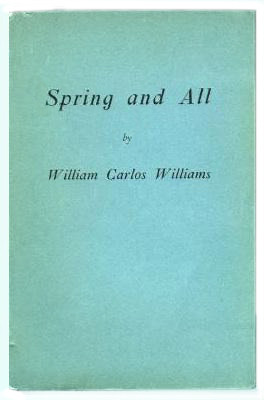
The Red Wheelbarrow
William Carlos Williams

Originally published without a title and given the moniker “XXII” for being the twenty-second poem in Williams' 1923 book Spring and All.
William Carlos Williams was an Imagist, that is he ascribed to the view that poetry should be simplified, stripped of Victorian Romanticism and focus instead on simple visual imagery. The movement grew up in USA and England, and contemporaries who followed this view included Ezra Pound and T E Hulme.

William Carlos Williams to Holiday Magazine in 1954 article Seventy Years Deep:
[The poem] sprang from affection for an old Negro named Marshall. He had been a fisherman, caught porgies off Gloucester. He used to tell me how he had to work in the hold in freezing weather, standing ankle deep in cracked ice packing down the fish. He said he didn’t feel cold. He never felt cold in his life until just recently. I liked that man, and his son Milton almost as much. In his back yard I saw the red wheelbarrow surrounded by the white chickens. I suppose my affection for the old man somehow got into the writing."
Poet Gregory Pardlo described the poem as the poetic Mona Lisa, “since its meaning is impossible to pin down, but its image is impossible to look away from.”